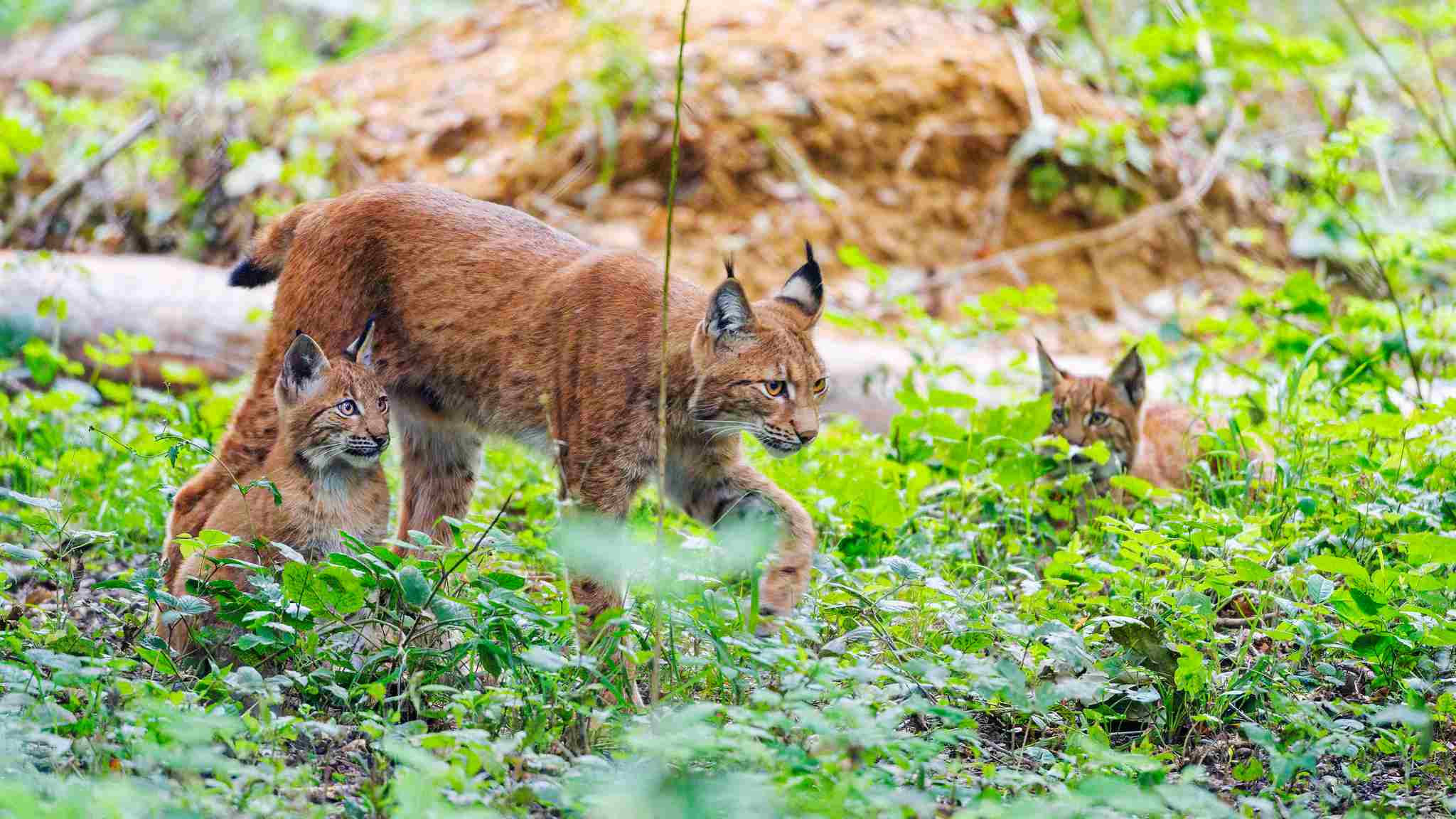1. Peregrine Falcon in the Arctic Tundra
Description: Peregrine Falcons (Falco peregrinus) are majestic birds of prey renowned for their incredible speed and agility. They belong to the family Falconidae and are found across various habitats worldwide, including the Arctic tundra. Despite their adaptability to diverse environments, they primarily inhabit open landscapes such as cliffs, tundra, and coastal regions.
Physical Characteristics: Peregrine Falcons exhibit distinctive physical traits that aid in their survival in the harsh Arctic tundra. They have sleek, streamlined bodies designed for swift flight, with long, pointed wings and a narrow tail. Their plumage varies in coloration, ranging from dark slate-gray to black on the back and wings, with white underparts adorned with fine, dark barring.
Ecological Role: As tertiary consumers in the Arctic tundra food web, Peregrine Falcons play a crucial role in regulating populations of smaller prey species. They primarily prey upon medium-sized birds such as ptarmigans, sandpipers, and waterfowl, utilizing their remarkable speed and aerial prowess to hunt with precision. Their presence helps maintain the balance of the ecosystem by controlling the abundance of prey species.
Behavior and Adaptations: Peregrine Falcons exhibit remarkable adaptations to thrive in the challenging Arctic environment. They are highly specialized hunters, employing a hunting strategy known as “stooping” where they dive steeply from great heights to strike their prey with astonishing force. This swift and precise hunting technique allows them to catch agile birds in flight, demonstrating their exceptional hunting prowess.
Challenges and Conservation: Despite their formidable adaptations, Peregrine Falcons face several challenges in the Arctic tundra, including habitat loss, climate change, and pollution. Changes in prey availability due to shifting environmental conditions can impact their survival and reproductive success. Conservation efforts, such as habitat protection, monitoring programs, and initiatives to reduce pollution, are crucial for safeguarding the future of Peregrine Falcons in the Arctic tundra and beyond.
Peregrine Falcons exemplify the remarkable adaptations of apex predators in the Arctic tundra ecosystem. As formidable hunters, they contribute to the ecological balance of the region by regulating prey populations. However, their conservation requires concerted efforts to address ongoing threats and preserve their critical habitat in the face of environmental change.
2. Polar Bear in the Arctic Tundra
Description: Polar Bears (Ursus maritimus) are iconic apex predators uniquely adapted to the extreme conditions of the Arctic tundra. They are the largest land carnivores, belonging to the Ursidae family, and are exclusively found within the Arctic Circle. Polar Bears are highly dependent on sea ice for hunting seals, their primary prey.
Physical Characteristics: Polar Bears possess several physical adaptations suited for life in the Arctic tundra. They have a thick layer of insulating fur and a thick layer of blubber beneath their skin, providing warmth in frigid temperatures. Their large, powerful limbs and broad paws are adapted for swimming and traversing icy terrain, while their keen sense of smell aids in locating prey over vast distances.
Ecological Role: As apex predators, Polar Bears play a vital role in regulating the Arctic ecosystem. They primarily feed on seals, especially ringed and bearded seals, which are abundant in Arctic waters. By controlling seal populations, Polar Bears indirectly influence the entire food web, maintaining the balance of marine ecosystems in the region.
Behavior and Adaptations: Polar Bears exhibit a range of behaviors and adaptations tailored to their Arctic habitat. They are skilled hunters, often patiently waiting near breathing holes in the ice or stalking seals on ice floes. Their semi-aquatic lifestyle enables them to swim long distances in search of prey, relying on their powerful swimming strokes and buoyant bodies to navigate icy waters.
Challenges and Conservation: Polar Bears face numerous challenges, including habitat loss due to melting sea ice, pollution, and human-wildlife conflicts. Climate change poses a significant threat, as diminishing sea ice reduces their hunting grounds and disrupts their natural behaviors. Conservation efforts, such as reducing carbon emissions, protecting critical habitat, and mitigating human-bear conflicts, are essential for the long-term survival of Polar Bears in the Arctic tundra.
3. Arctic Wolf in the Arctic Tundra
Description: Arctic Wolves (Canis lupus arctos) are highly adapted predators that inhabit the vast expanses of the Arctic tundra. They are a subspecies of the gray wolf and are well-suited to endure the harsh climatic conditions of the Arctic region, including freezing temperatures and scarce resources.
Physical Characteristics: Arctic Wolves exhibit several physical adaptations optimized for survival in their frigid habitat. They have a thick, double-layered coat consisting of a dense underfur and longer guard hairs, providing insulation against the cold. Their large paws are equipped with fur-covered pads, offering traction on icy terrain and facilitating efficient movement through snow.
Ecological Role: As top predators, Arctic Wolves play a crucial role in regulating prey populations and shaping the dynamics of the Arctic tundra ecosystem. They primarily hunt large herbivores such as muskoxen, caribou, and Arctic hares, helping to control their numbers and prevent overgrazing in the fragile tundra habitat.
Behavior and Adaptations: Arctic Wolves exhibit complex social behaviors and hunting strategies adapted to their environment. They live in cohesive packs, typically comprised of a dominant breeding pair and their offspring. Pack hunting enables them to tackle larger prey species cooperatively, employing tactics such as ambushes and coordinated pursuits to secure their meals.
Challenges and Conservation: Arctic Wolves face various threats in their tundra habitat, including habitat degradation, competition with other predators, and human disturbances. Climate change exacerbates these challenges, altering prey distribution and habitat suitability. Conservation efforts aimed at protecting wilderness areas, managing prey populations sustainably, and minimizing human impacts are essential for ensuring the long-term survival of Arctic Wolves in the Arctic tundra ecosystem.
These apex predators play vital roles in maintaining the ecological balance of the Arctic tundra, highlighting the interconnectedness of species within this fragile ecosystem.
4. Wolverine in the Arctic Tundra
Description: Wolverines (Gulo gulo) are robust, solitary predators known for their strength and tenacity. Despite their relatively small size, they are formidable carnivores that inhabit various northern ecosystems, including the Arctic tundra. Wolverines belong to the Mustelidae family and are renowned for their scavenging abilities.
Physical Characteristics: Wolverines have several physical adaptations suited for life in the Arctic tundra. They possess a thick, coarse fur coat that provides insulation against the cold, enabling them to withstand subzero temperatures. Their powerful jaws and sharp claws are well-suited for capturing prey and scavenging carrion, while their large, snowshoe-like feet facilitate movement across deep snow.
Ecological Role: As opportunistic feeders, Wolverines play a vital role in the Arctic tundra ecosystem by scavenging carrion and preying on small mammals. They are known to feed on a variety of prey, including rodents, birds, and even larger mammals such as caribou and muskoxen. By consuming carrion and controlling populations of smaller mammals, Wolverines contribute to nutrient cycling and ecosystem dynamics.
Behavior and Adaptations: Wolverines exhibit solitary behavior and have vast home ranges, which they patrol in search of food and suitable den sites. They are adept climbers and swimmers, allowing them to navigate diverse terrain and pursue prey across challenging landscapes. Wolverines are known for their fierce demeanor and willingness to defend their territories and food sources against larger predators.
Challenges and Conservation: Wolverines face numerous threats in the Arctic tundra, including habitat loss, climate change, and trapping pressure. Their dependence on large, intact wilderness areas makes them particularly vulnerable to habitat fragmentation and human disturbances. Conservation efforts focused on preserving wilderness habitats, regulating trapping activities, and mitigating climate change impacts are essential for safeguarding the long-term survival of Wolverines in the Arctic tundra.
5. Lynx in the Arctic Tundra
Description: Lynxes are medium-sized felids known for their distinctive tufted ears and short tails. In the Arctic tundra, the Eurasian Lynx (Lynx lynx) and the North American Lynx (Lynx canadensis) are the two species that inhabit these cold environments. They are solitary and elusive predators, well-adapted to hunting in snow-covered landscapes.
Physical Characteristics: Lynxes possess several physical adaptations that aid in their survival in the Arctic tundra. They have thick fur coats with a mix of gray, brown, and white fur, providing camouflage against the snowy backdrop. Their large, padded paws act as natural snowshoes, allowing them to move quietly and efficiently across deep snow. Their keen senses, including acute hearing and vision, make them effective hunters in low-light conditions.
Ecological Role: As efficient predators, Lynxes play a crucial role in regulating prey populations in the Arctic tundra ecosystem. They primarily prey on small to medium-sized mammals such as snowshoe hares, voles, and ptarmigans, helping to control their numbers and prevent overgrazing of vegetation. Lynxes are also known to occasionally prey on larger animals such as deer when opportunities arise.
Behavior and Adaptations: Lynxes are solitary animals with vast home ranges, which they mark and defend against intruders. They are crepuscular hunters, meaning they are most active during dawn and dusk when their prey is also active. Lynxes employ stealth and ambush tactics to capture their prey, using their powerful hind legs to pounce on unsuspecting targets with precision.
Challenges and Conservation: Lynxes face various threats in the Arctic tundra, including habitat loss, prey depletion, and human disturbances. Climate change poses additional challenges, altering prey distribution and habitat suitability. Conservation efforts focused on protecting lynx habitat, managing prey populations sustainably, and minimizing human impacts are essential for ensuring the long-term survival of Lynxes in the Arctic tundra ecosystem.
These tertiary consumers, the Wolverine and the Lynx, contribute to the intricate web of life in the Arctic tundra, demonstrating the importance of apex predators in maintaining ecosystem balance and resilience.
*Summary
-
Peregrine Falcon:
-
Description: Majestic birds of prey known for speed and agility.
-
Physical Characteristics: Streamlined bodies, pointed wings, varied plumage.
-
Ecological Role: Regulate prey populations by hunting medium-sized birds.
-
Behavior and Adaptations: Employ stooping hunting technique, adapted to harsh Arctic environment.
-
Challenges and Conservation: Face habitat loss, climate change, and pollution; require conservation efforts.
-
Polar Bear:
-
Description: Largest land carnivores, adapted to Arctic conditions.
-
Physical Characteristics: Thick fur, large limbs, keen sense of smell.
-
Ecological Role: Apex predators, control seal populations, maintain marine ecosystem balance.
-
Behavior and Adaptations: Patience in hunting seals, semi-aquatic lifestyle.
-
Challenges and Conservation: Threatened by habitat loss, pollution, and climate change; conservation efforts crucial for survival.
-
Arctic Wolf:
-
Description: Highly adapted predators in Arctic tundra.
-
Physical Characteristics: Thick double-layered coat, large paws.
-
Ecological Role: Control prey populations, shape ecosystem dynamics.
-
Behavior and Adaptations: Live in packs, employ coordinated hunting strategies.
-
Challenges and Conservation: Face habitat degradation, competition, and human disturbances; conservation efforts needed for survival.
-
Wolverine:
-
Description: Robust solitary predators known for scavenging.
-
Physical Characteristics: Thick fur, powerful jaws, large snowshoe-like feet.
-
Ecological Role: Scavenge carrion, prey on small mammals, contribute to nutrient cycling.
-
Behavior and Adaptations: Solitary behavior, adept climbers and swimmers.
-
Challenges and Conservation: Threatened by habitat loss, trapping pressure, and climate change; conservation efforts essential.
-
Lynx:
-
Description: Medium-sized felids adapted to hunting in snow-covered landscapes.
-
Physical Characteristics: Thick fur coat, tufted ears, padded paws.
-
Ecological Role: Regulate prey populations, primarily hunt small to medium-sized mammals.
-
Behavior and Adaptations: Solitary hunters, crepuscular activity, employ stealth and ambush tactics.
-
Challenges and Conservation: Face habitat loss, prey depletion, and human disturbances; conservation crucial for survival.


